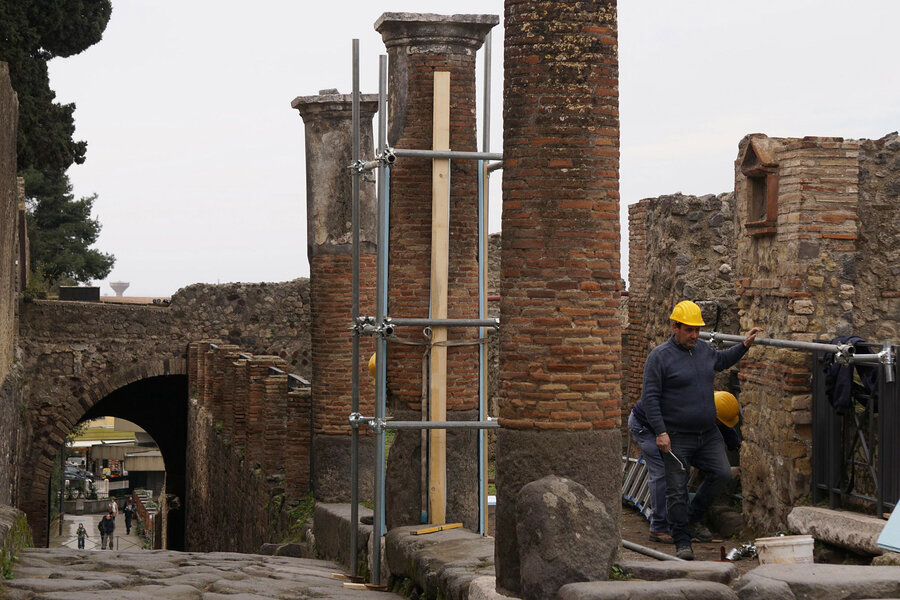The libraries of Herculaneum: Not quite destroyed by Mt. Vesuvius?
Loading...
It may require a particle accelerator, X-ray vision, and a highly toxic metal, but researchers believe they could soon be reading from the libraries of Herculaneum, an ancient Roman town destroyed by a volcano to the benefit of archaeology.
Scientists have discovered that ancient scholars in the town which, along with its more-famous neighbor, Pompeii, was destroyed by the volcanic eruption of Mt. Vesuvius used a lead-based paint, which they may be able to read using X-ray technology, Sonia van Gilder Cooke wrote for the New Scientist.
“This really opens up the possibility of being able to read these scrolls,” Graham Davis, a reader for 3D X-ray imaging at Queen Mary University of London, told New Scientist. “If this is typical of this scroll or other scrolls, then that is very good news.”
Archaeologists found about 800 ancient papyrus scrolls when they began digging through a private library, dubbed the "Villa of the Papyri," in Herculaneum in 1752, but 200 remain too delicate even to open. Discovering lead among the ink's components surprised physicist Vito Mocella of the Italian National Research Council and his colleagues, who published their findings in the journal Proceedings of the National Academy of Sciences.
Classicists had believed the ancients did not use lead in their ink until at least the fourth century. The volcanic eruption from Mt. Vesuvius destroyed Herculaneum and Pompeii in 79 AD.
"Metallic ink was used several centuries earlier than previously thought," researchers wrote in the study. "In particular, we found strong evidence that lead was intentionally used in the ink of Herculaneum papyri."
This is not the first creative attempt to read the preserved scrolls of Herculaneum. Early researchers who tried to unroll the scrolls usually destroyed them in the process, so researchers began looking for technological solutions, Tia Ghose wrote for LiveScience.
"They poured mercury on them, they soaked them in rosewater — all kinds of crazy stuff," Jennifer Sheridan Moss, a papyrologist at Wayne State University in Detroit told LiveScience.
X-ray technology was tried, but early efforts failed because the charred paper and the carbon-based ink were too similar chemically. Researchers, including Dr. Mocella, then tried a technique known as X-ray phase-contrast tomography. Because the letters written on the papyrus are slightly raised, scientists could measure the height difference as the rays that reflected back, and they painstakingly deciphered Greek letters and words on six of the scrolls.
"The papyri have been burnt, so there is not a huge difference between the paper and the ink," Mocella told Live Science.
The process was difficult and limited to scrolls with specific properties, so researchers continued to search for new methods. Some had wondered whether lead might be a possibility, but researchers became convinced only after they applied the most modern of physics to the ancient documents. Researchers tested the particles from the scrolls in the particle accelerator at Grenoble, France, Esther Inglis-Arkell wrote for Gizmodo.
"From a historical point of view, [the presence of lead] is a surprise,” Mocella told the New Scientist.
A highly sensitive X-ray machine with the proper calibration can detect the lead, and Mocella and his team plan to test the idea in Naples later this year.






